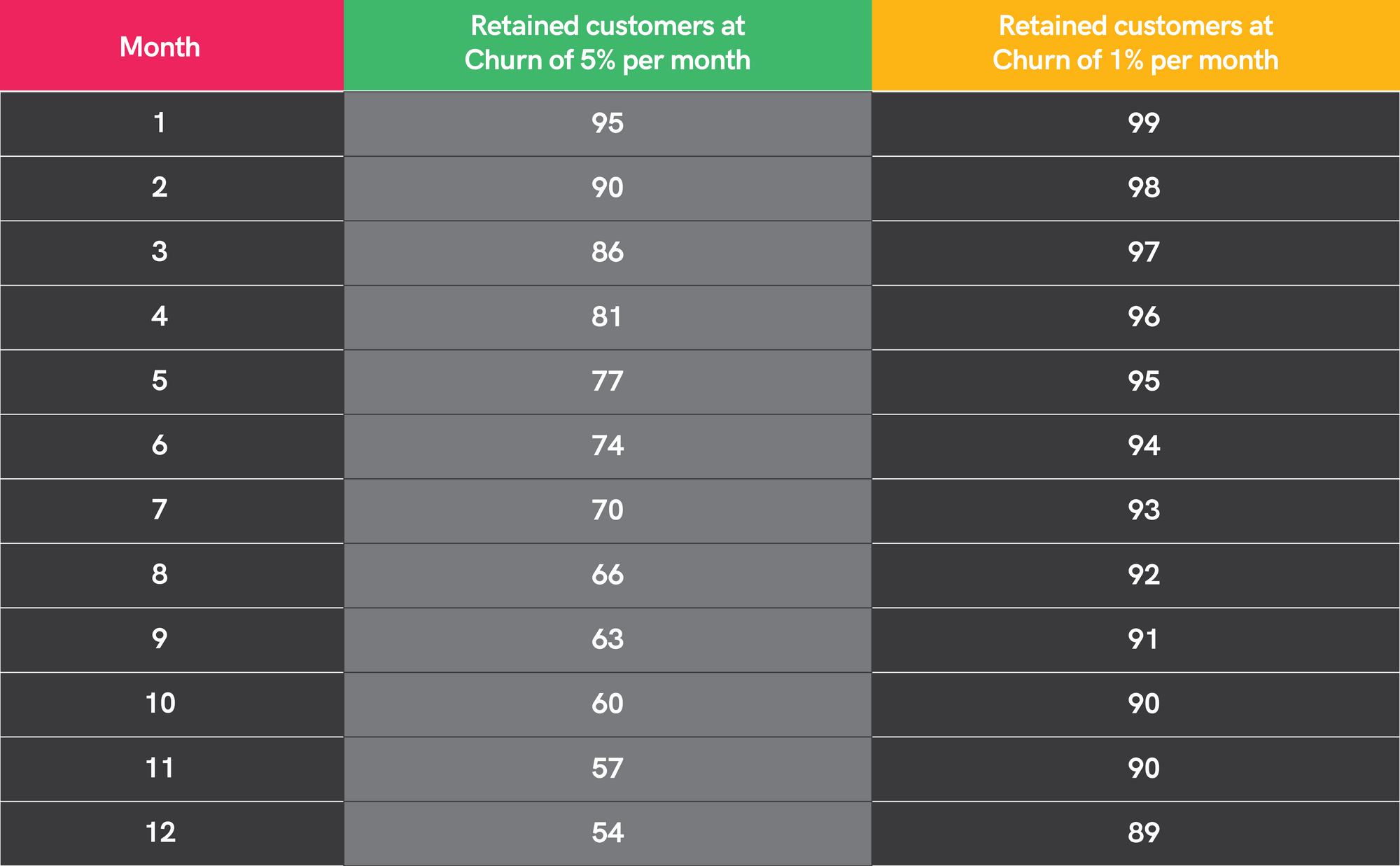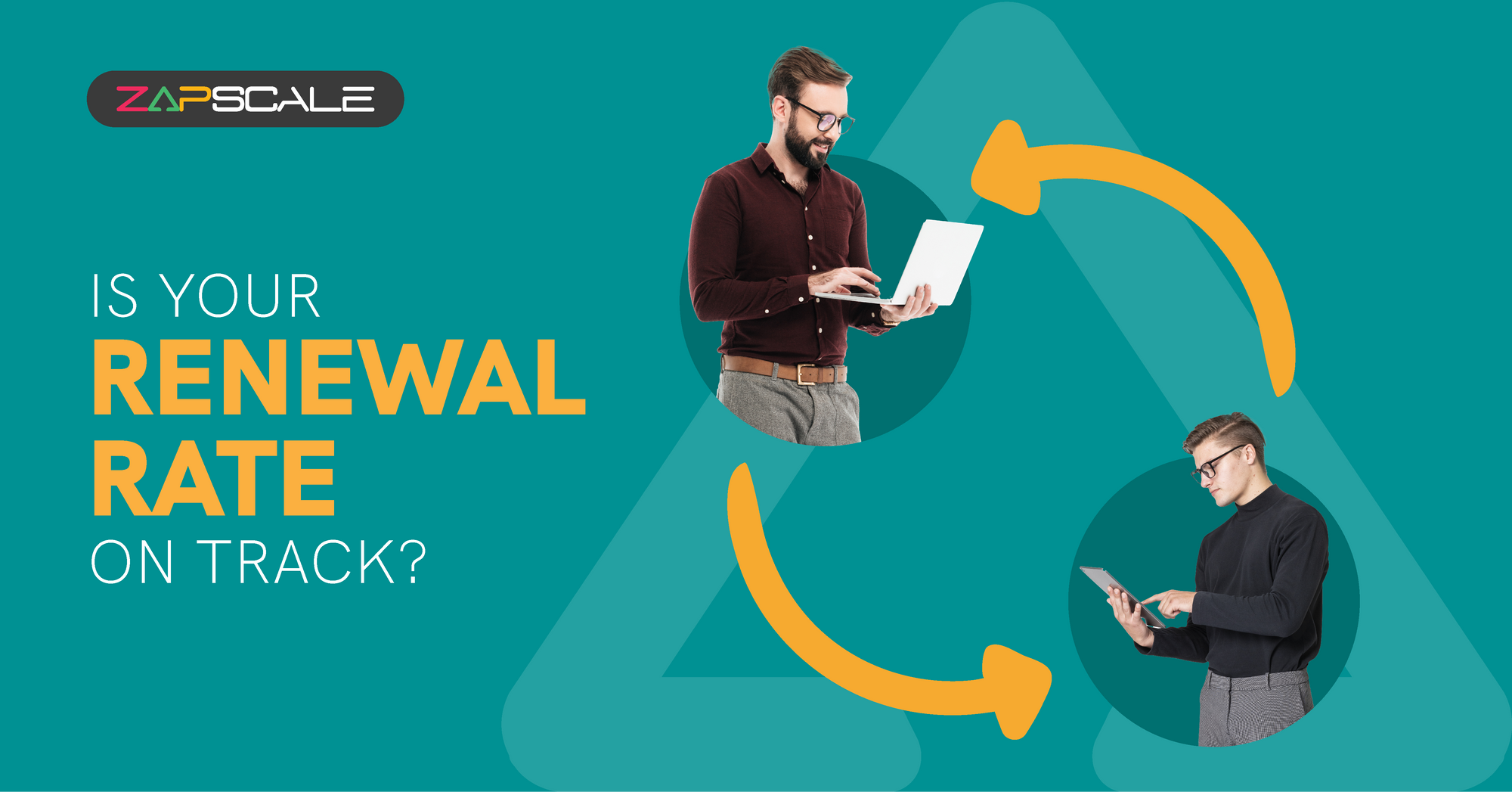CATEGORY > Customer Retention
Customer Retention – The CS Paradox

Introduction
Have you ever tried to fill a leaky bottle? Sounds ridiculous right? And yet, “Retention” is not the favorite word when you look at your revenue figures at the end of the Fiscal Year.
New Acquisitions vs. Existing Customers
Growth, while it is essential, it is equally important to realize that growth happens from two avenues:
1. New acquisition
2. Existing customers
Take a look at the example below:
- Let’s just say you have 5 customers till Dec 23.
- You onboarded 5 new customers at the beginning of Jan 24 and are expected to be billed from Jan itself.
- At the end of Dec 24, you will expect a revenue from 10 customers but you only see that there’s a revenue from 7 customers only.
- You expected to grow 2x, from 5 to 10, and ended up at just a 40% growth only, 60% less than your projections.
- Did you grow? Yes, mathematically you did. You now have 7 customers instead of 5.
- Did you grow as per your business goals? No, you didn’t. As a business, if you decide to onboard 3 new customers to fill the deficit and start billing from Jan 25, then at the end of Dec 25, you will again see that the paying set of customers active with you is less than your projections.
You never reach the growth target you wish to. Did your aggressive acquisitions help? NO.
Why don't SaaS churn rates bother many organizations?
Many organizations do not realize the money math behind churn, OR, even if they do, they feel they can checkmate the losses with new onboardings.
A fallacy is very common in the customer success world.
- SaaS organizations push towards aggressive growth with sales showing them pipelines that promise onboarding rates that will help them break even or show slight growth. This makes them very happy. Who doesn’t like new customers? They forget the leaky bottle principle though.
- A high churn rate is treated as an industry norm, accepting it and moving on becomes the attitude.
Let the "Churn Math" scare you a bit
Let’s say on 1st Jan 24 at 12:00 AM, you have 100 customers. You do not know what degree of churn is okay for you (considering you accept the fact that churn is okay).
The following table will show you that if you think a permissible churn rate of 5% a month or 1% a month is okay, then the number of retained customers at the end of the year looks like as follows:-

So, at the end of the year, to break even, you need to acquire 46 customers if you are okay with 5% monthly churn and 11 customers if you are okay with 1% monthly churn, respectively.

Let that sink in! Isn’t Math beautiful? Or it is still scary?
The above numbers are pretty linear and can be termed by some as oversimplification. Some organisations have “negative churn” or “expansion revenue” where even if you churn, you make up the losses through upsell, cross-sell, higher subscriptions, etc. Your CAC (Customer Acquisition Cost) will often betray your over-optimism of achieving negative churn. Be practical and focus on retention.
Cross-selling or Upselling cannot manage
extreme churns.
How to improve customer retention?
Customers churn because we do not listen to them well and realize their goals. It is as simple as that. There can be a remote possibility of the customer going out of business but that’s quite a rarity. So how can you retain customers?
1. Excellent Onboarding Experiences
The way you onboard your customer, all the first experiences will take you a long way. If your customer feels delighted, it is simply an easy task to retain that customer.
2. Build Trust
Half the job is done if you gain your customer’s trust. It is difficult and takes tremendous dedication and customer advocacy to gain that.
A customer success manager needs to work on building the trust factor. The customer should start developing a sense of connection with you discussing things that are strategically important to work but not immediately needed.
That will give you foresight into the account and you can build your game plan for the longer lap.
3. Establish a Gantt Chart Methodology
Although a typical Project Managing tool as I have established that a CSM needs to take every kick-off to maturity phase as a project management journey, it can be an interesting infographic tool to help your Client SPOCs know where they are in the whole delivery timeline, what are the delays and dependencies, etc.
This adds transparency, reduces the chances of getting held accountable for missing SLAs, and above all improves the whole experience.
4. Customer Communication Periodicity
You need to have excellent periodic communications with your customers. Regular updates and weekly status calls till you go live and post that planned MBRs, QBRs as well as fortnightly reviews (if needed).
Customers love data and want them to be spoon-fed the progress, the achievement of their ROIs, the goal-realization vs. time invested reality checks, etc.
Always remember that if your customer’s goals are achieved and if you can keep them glued, they will stay.
5. Loyalty and Customer’s Opinion Programs
Give your customers loyalty brownies, take their opinions in your next product sprint, and make them feel like important advisors to the company’s growth as if they are investors more and paying customers less. This will help retain customers drastically.
6. Customer Retention Program
Sit with your marketing team and plan customer retention programs. Pull in strategy to agree on the financials. Multiple retention programs and bonuses will help customers feel delighted and thus stay.
7. The Feedback Lifeline
Take customer feedback periodically and ACT on them.
Check incident management efficiency with your support team and check on SLA achievements. These are daily best practices that build a very good customer experience.
A Customer Success Manager is the sole physician who will have to understand the customer's health in the best possible way.
Understand the qualitative (psychological aspects) of the customer. Understand the quantitative aspects as well (credit building without paying, not showing up for MBRs, unresponsive).
One has to be persistent with customers to retain them. One has to love their customers.
A CSM is a customer advocate, period.
Conclusion

In your customer success journey, your customers will encounter service delivery lags. It is important how you resolve them, how you accept your moments of truth, and how you ensure that the customer cannot churn.
Customers love to see how your call to action and resolutions are.
There are chances that these customers may move to a cheaper product or deal. The ones who are delighted by your TATs and honest intentions will stay.
They know you will walk the extra mile. Always walk the extra mile.
As important as it is to retain customers, sometimes Customer Lifecycle Value (CLV) calculations may hint otherwise. There can be overdemanding, less paying, freebie-seeking customers who, even though instrumental in the initial days of your SaaS organization as a good logo on the client list, may slow down your growth journey in the longer run. They may be sluggish, and averse to upgradations.
Retaining such customers often may go into a negative cash inflow situation where keeping them occupies more man hours and brings in lesser cash compared to what the same man hours would have brought to you had you used them in newer, promising accounts. But(there’s always a but), all that when you have done that comparative CLV analysis. Let’s keep that for some other day.
Only milk yields butter with churn. For SaaS, it takes away all the butter. Work on retention. Let sales work on acquisition, don’t forget the math, and work on retaining customers. That will keep your books delighted at the end of the fiscal year. Godspeed!
ABOUT THE AUTHOR

Ankit Acharya
Ankit is a seasoned Customer Success and Project Management professional with 8+ years of experience in IT, SaaS, and Product Organisations, having worked with Fortune 500 companies too. He is presently designated as a Sr Manager - Customer Success and Strategic Projects, working with a SaaS organization, building anti-counterfeiting products for consumer industries.
Popular from Customer Retention
Quality Content,
Straight To Your Inbox!
Subscribe for the latest blogs, podcasts, webinars, and events!

Write a Blog
If you have experience in CS and
a flair for writing, we’d love to
feature you.
Write to us on
hello@zapscale.com




